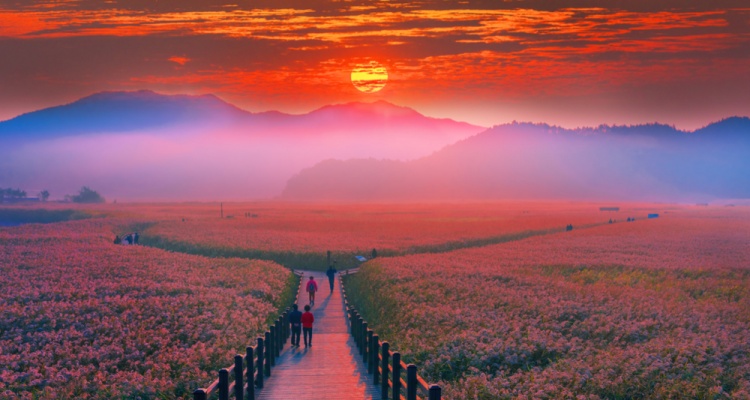If you’re planning a trip to South Korea, it may surprise you to learn that there’s more to the country than just Seoul. Sure, the capital city is one of the oldest and largest metropolises on the planet and is home to half of the population of South Korea–and a worthwhile destination in its own right.
But you can find an abundance of amazing travel experiences outside of it. Most travel writing about the region focuses on the nation’s most famous city. So here are just 7 destinations to consider when you’re booking flights to South Korea, places that will inspire you to travel beyond Seoul.
Seoraksan National Park

Although it’s just one of the 20+ national parks in South Korea, Seoraksan National Park in the northeastern province of Gangwon is a nature lover’s dream. It’s a little over 60 square miles and is renowned for its mountains and diverse ecosystem. There are plenty of hiking opportunities and its scenery remains picturesque no matter the season, which makes it a great visit no matter what time of year you’re there.
Jeju Island
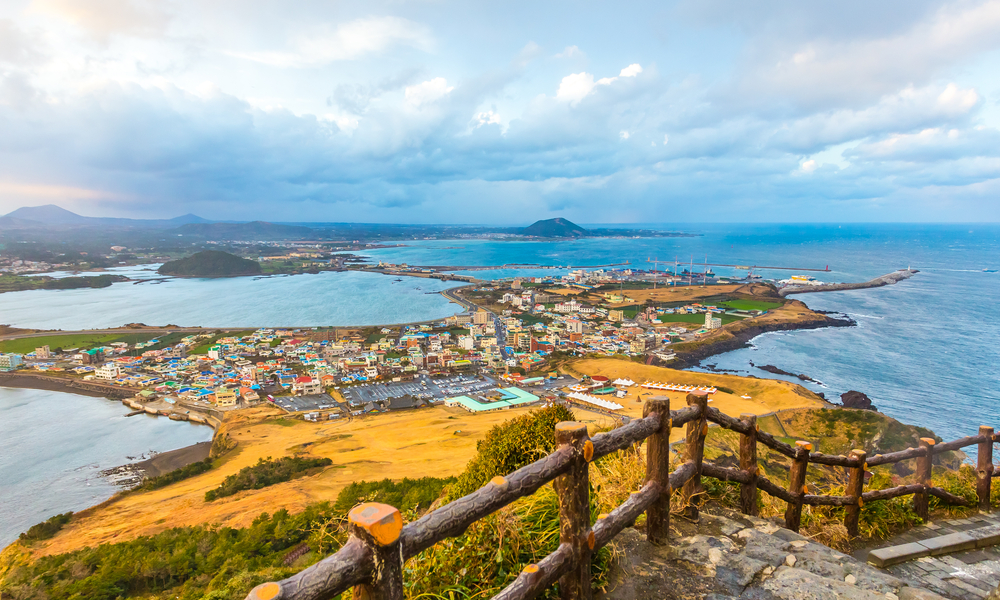
While it’s not technically part of the countryside, Jeju Island is an iconic South Korean destination. It’s the country’s largest island, located off its southern coast, and has long been a popular holiday and honeymoon hot spot for locals. The big draw is the dormant volcano Hallasan–a UNESCO world heritage site and the country’s highest mountain–which is great for hiking. But there are also beaches, relaxing spas, unique local history, fresh seafood, and even an adults-only amusement park–because of the island’s reputation among honeymooning couples.
Damyang

The county of Damyang in the South Jeolla province has a lot to offer. There’s great hiking, an ancient fortress and a couple of temples, and delicious local cuisine. But it’s #1 claim to fame is its bamboo. It’s home to the renowned Juknokwon bamboo garden, which is open year-round; the bamboo museum; and, in early May, a bamboo festival.
Naksan Beach
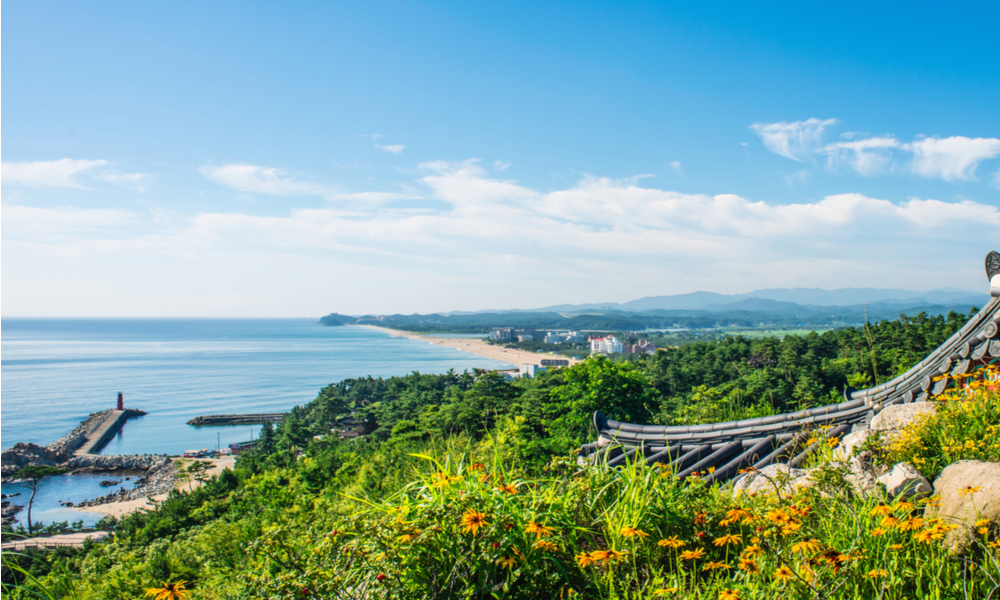
Not far from Seoraksan National Park, Naksan Beach is a quiet alternative to the crowded beaches of Busan. People first began coming to the two-and-a-half-mile stretch of white sand on the northeast coast in the 1960s to escape the summer heat in its cold and clear blue water. Since then, the town of Nakasan has become a charming beach town with a boardwalk-like atmosphere. There’s also a nearby temple and the area has reputation for beautiful sunrises and sunsets.
Jinhae
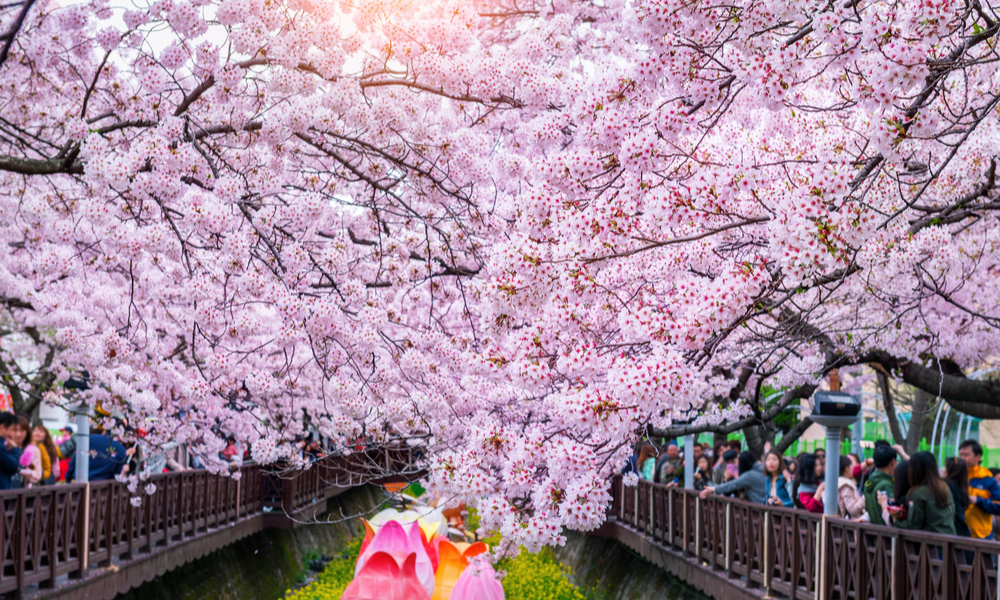
If you’re looking for cherry blossoms, then you need to head to Jinhae. It’s a district of Changwon City in the Gyeongsangnam province that’s home to the largest and most famous cherry blossom festival in South Korea. Unfortunately, it can be hard to predict just when the distinctive pink and white flowers will make their week-long bloom–it’s usually sometime in April–so planning a trip far in advance can be tough. But if you do find yourself in Jinhae during this famed festival, it’s a breathtaking experience with fireworks, a parade, and the chance to go on lots of walks to take in the gorgeous scenery.
Daedunsan Mountain
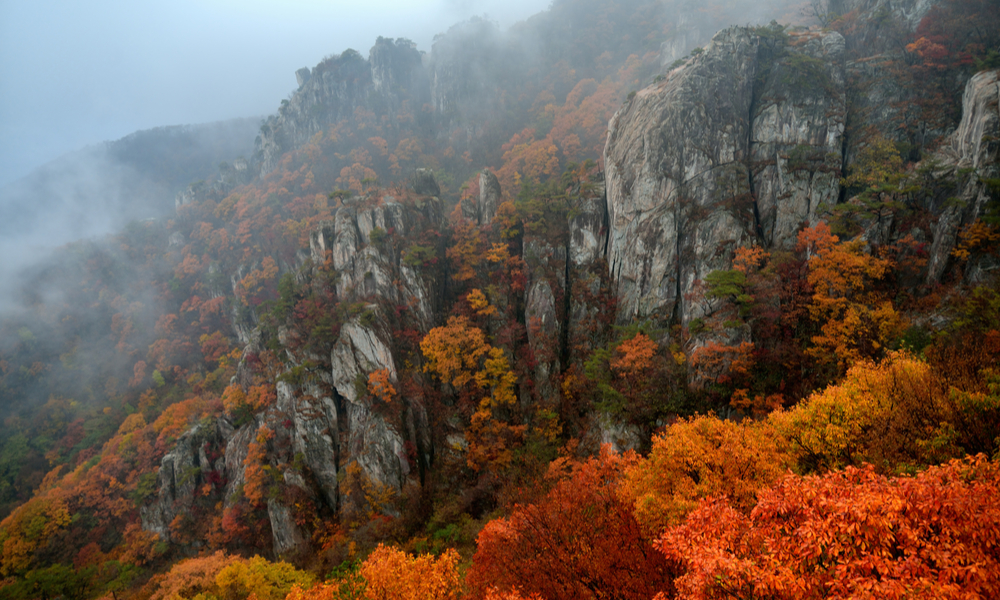
Daedunsan Mountain is a hiker’s dream. The mountain, which is in the South Chungcheong province of Western South Korea, is best visited in the fall when the leaves are in autumn colors. And while it may seem like a short hike on paper–the trek is only about 2 km–it’s incredibly steep and can take about 4 to 5 hours to complete. Luckily there’s a cable car that you pay to ride up the mountain and back (if you don’t feel like hiking at all). But no matter if you take the cable or not, you’ll have to walk across the famed 50-meter-long Geumgang Gureumdari suspension bridge, AKA the cloud bridge, which sits more than 80 meters off the ground and spans a narrow canyon (see picture below), and then up the 70-degree, 127-step Daedunsan Stairway, to take in the stunning views at the the peak of the mountain.
You Might Also Enjoy: Seoul Searching: Your Guide to a Fun-Filled Stop in South Korea’s Capital
Gyeongju
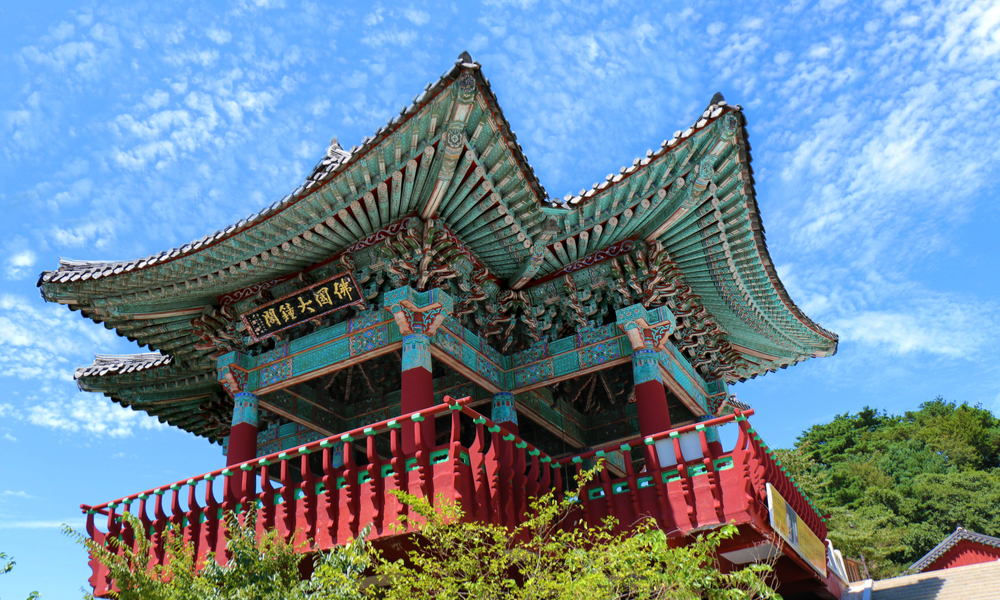
Located in North Gyeongsang Province, close to the eastern coast, is the ancient capital of Gyeongju. Home to a plethora of temples, ruins, tombs, and statues, the city of more than a quarter million people has been called “the museum without walls.” For almost a thousand years, from 57 BC to 935 AD, the Silla dynasty ruled the Korean peninsula from Gyeongju and the city is now a history lover’s paradise. Some of the top things to see include the Gyeongju Historic area, the Daereungwon Tomb Complex, and the Gyeongju National Museum Park.
So, there’s so much for you to look forward to as you’re looking for flights to South Korea. Expand your horizons beyond the Seoul area and see for yourself!
FAQs:
Q: What is the best time to visit South Korea’s countryside?
A: The best time to visit South Korea’s countryside largely depends on your preferences. Spring (April to June) offers pleasant weather and vibrant cherry blossoms, making it an excellent choice for nature enthusiasts. If you prefer mild temperatures and lush green landscapes, consider visiting during the summer (July to August). Autumn (September to November) is perfect for those who want to witness the breathtaking fall foliage. Finally, winter (December to February) is ideal for enjoying snowy landscapes and winter sports in places like Seoraksan.
Q: Are there accommodations available in these countryside destinations?
A: Yes, most of the countryside destinations mentioned in the article offer a range of accommodations to suit different budgets. You can find cozy guesthouses, traditional hanok stays, boutique hotels, and even luxury resorts. It’s advisable to book your accommodations in advance, especially during peak tourist seasons, to ensure availability.
Q: Is it necessary to speak Korean to explore South Korea’s countryside?
A: While knowing some basic Korean phrases can be helpful and enhance your experience, it’s not a strict requirement. Many tourist-friendly areas have English signage, and locals in the tourism industry often have a basic understanding of English. Downloading translation apps or carrying a phrasebook can also be handy for communication.
Q: How can I get to these countryside destinations from major cities like Seoul and Busan?
A: South Korea has an efficient transportation system, making it relatively easy to access countryside destinations from major cities. You can take high-speed trains (KTX) or intercity buses to most regions. Alternatively, consider renting a car for more flexibility in exploring remote areas. Domestic flights are also available to Jeju Island. Detailed transportation information is readily available online and at transportation hubs.
These are just a taste of the destinations that can be found in South Korea’s countryside. If you know of any others, leave them in the comments below!

